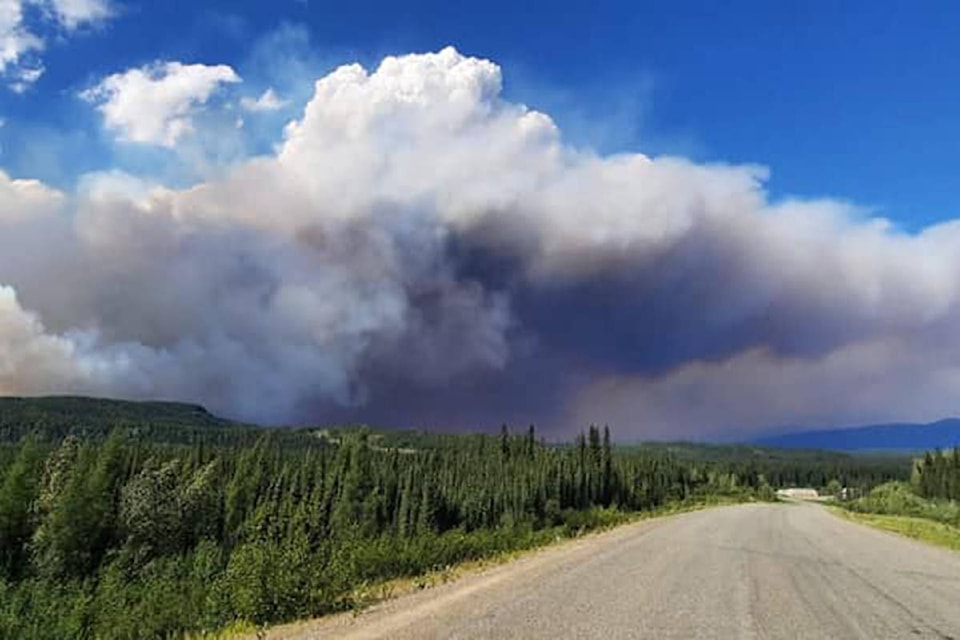Wildfires in the Yukon have slowed in recent days, allowing a closed stretch of highway to reopen.
The growth of the Tuchita River fire late last week led the Yukon government to close the Robert Campbell Highway between Watson Lake and Ross River. Once the fire had crossed the highway, it was able to reopen with a pilot car service escorting drivers across a 20 km stretch on July 12.
Fire information officer Mike Fancie said the blaze burned up most of the fuel in the area, but there may still be some heat in the ground, in addition to the risk of falling trees. The pilot car service is still operating through the heat of the day, 9 a.m. to 9 p.m., when the possibility for fire activity is greatest. After 9 p.m. when it is cooler, traffic is flowing uncontrolled.
Fancie said drivers on the Robert Campbell Highway should be prepared for delays at the site of the fire, which is approximately eight kilometres north of Nahanni Range Road and growing to the northeast.
The fire was 9,191 hectares when it was last measured. The affected area was burned by a wildfire in 2004, so less remaining fuel might slow its growth, Fancie added.
According to Fancie, work on fire guards and other measures to protect properties is ongoing within eight km north and south of the highway’s junction with the Nahanni Range Road. He said he is confident there is little risk to those properties along the highway at this point.
Elsewhere in the territory, structural protection work, including a fire break, succeeded in saving buildings at Hootalinqua from the Lake Laberge fire. The fire is approximately 4,004 hectares in size. Fancie said it is burning northwards deeper into the wilderness and away from the lake and any structures. He added the fire’s activity decreased and its growth slowed over the weekend.
The other notably large fire being monitored is the Clear Creek fire burning near Mayo. Fancie said it is being monitored and is currently at 8,678 hectares.
Conditions may change and further slow the growth of the fires. Fancie said the Yukon government is tracking a low-pressure system over the Arctic Ocean. It will likely bring rainfall to much of the territory beginning with the north. Although he said the probability of lightning with the coming weather is low, Fancie noted that it is always a possibility with unsettled weather.
Lightning has been the cause of the majority of fires in the Yukon so far this year. Fancie said based on a 10-year average, 30 per cent of wildfires are human caused compared to 70 per cent started by lightning. This year, lightning has been the cause of 81 per cent of fires.
There have been 45 fires in the Yukon so far this year — 30 of them are still active.
Contact Jim Elliot at jim.elliot@yukon-news.com
